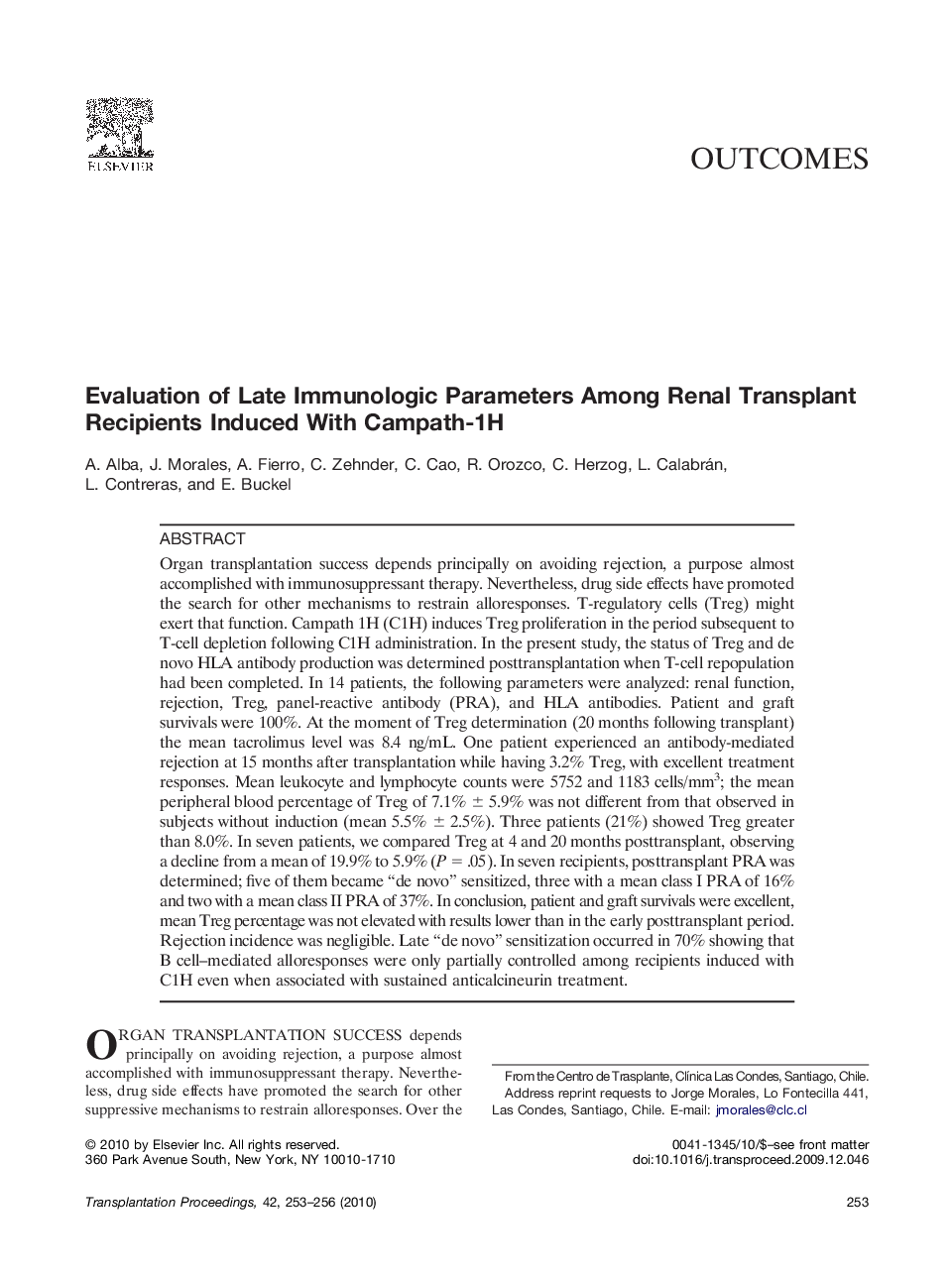| Article ID | Journal | Published Year | Pages | File Type |
|---|---|---|---|---|
| 4260861 | Transplantation Proceedings | 2010 | 4 Pages |
Organ transplantation success depends principally on avoiding rejection, a purpose almost accomplished with immunosuppressant therapy. Nevertheless, drug side effects have promoted the search for other mechanisms to restrain alloresponses. T-regulatory cells (Treg) might exert that function. Campath 1H (C1H) induces Treg proliferation in the period subsequent to T-cell depletion following C1H administration. In the present study, the status of Treg and de novo HLA antibody production was determined posttransplantation when T-cell repopulation had been completed. In 14 patients, the following parameters were analyzed: renal function, rejection, Treg, panel-reactive antibody (PRA), and HLA antibodies. Patient and graft survivals were 100%. At the moment of Treg determination (20 months following transplant) the mean tacrolimus level was 8.4 ng/mL. One patient experienced an antibody-mediated rejection at 15 months after transplantation while having 3.2% Treg, with excellent treatment responses. Mean leukocyte and lymphocyte counts were 5752 and 1183 cells/mm3; the mean peripheral blood percentage of Treg of 7.1% ± 5.9% was not different from that observed in subjects without induction (mean 5.5% ± 2.5%). Three patients (21%) showed Treg greater than 8.0%. In seven patients, we compared Treg at 4 and 20 months posttransplant, observing a decline from a mean of 19.9% to 5.9% (P = .05). In seven recipients, posttransplant PRA was determined; five of them became “de novo” sensitized, three with a mean class I PRA of 16% and two with a mean class II PRA of 37%. In conclusion, patient and graft survivals were excellent, mean Treg percentage was not elevated with results lower than in the early posttransplant period. Rejection incidence was negligible. Late “de novo” sensitization occurred in 70% showing that B cell–mediated alloresponses were only partially controlled among recipients induced with C1H even when associated with sustained anticalcineurin treatment.
